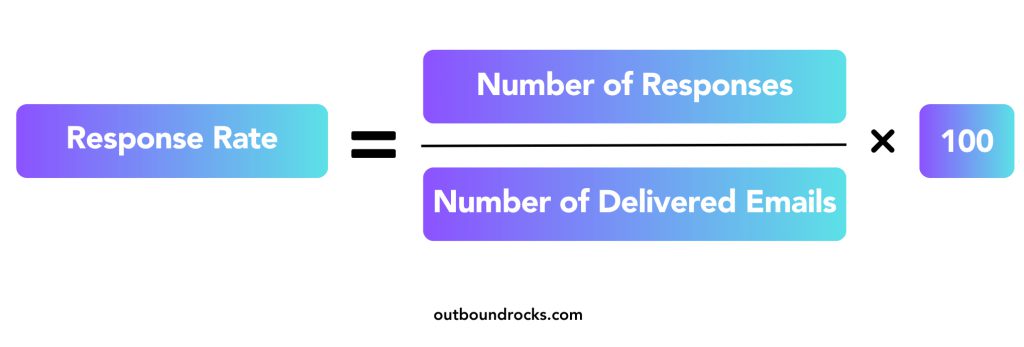In the world of email marketing, achieving impressive response rates is the gold standard for any successful campaign.
The ability to effectively connect with your audience through cold emails is a skill that can take your outreach efforts to new heights.
In this article, we will learn exactly what email response rates are and how to accurately calculate them.
We’ll also uncover the current landscape by exploring the average cold email response rate in 2024.
Read on to revolutionize your email outreach strategy!
TABLA DE CONTENIDOS
– Email response rates
– How to calculate it
– What’s the average cold email response rate in 2024?
– Tips to optimize your reply rates
– Conclusions
Email Response Rates
Email response rate is an indicator of the overall success or effectiveness of your email marketing efforts.
This metric measures the effectiveness of an email campaign by calculating the percentage of recipients who take a desired action, such as opening the email, clicking on a link, or replying to the message.
It also provides insight into how well your audience engages with your email content.
How to calculate Response Rates?
To calculate the email response rate, the formula is generally expressed as:

Where:
- Number of Responses: refers to the total count of favorable actions or engagements generated by your email campaign. Essentially, it quantifies the positive interactions you’ve elicited from your recipients.
- Number of Delivered Emails: represents the total quantity of emails that successfully reach the intended recipients’ inboxes without bouncing or being marked as spam.
This metric provides marketers and organizations with a tangible measure of the impact and relevance of their email campaigns.
It also allows them to improve content and ultimately increase the likelihood of achieving their goals.
What’s the Average Cold Email Response Rate in 2024?
In 2024, the average cold email response rate will continue to be a dynamic and variable metric.
According to results from Outbound Rocks, our widely used email marketing tool, the generally accepted average for cold email response rates is in the range of approximately 1% to 5%.
It’s important to view the 1-5% average response rate as a broad guideline, recognizing that individual campaign results are influenced by a variety of factors.
These factors can include the quality of the email content, the relevance of the message to the target audience, the timing of the campaign, and several other variables.
Tips to optimize your reply rates
Optimizing your cold email campaigns and response rates is critical to the success of your meeting booking efforts.
Here’s a series of tips to guide you through the process:
✅ Subject line: create a short, eye-catching subject line that is relevant to the recipient’s interests. This is a critical aspect of your email as it serves as the first impression and significantly influences whether your email is opened and responded to.
✅ Follow-up: take the initiative to follow up with recipients who haven’t responded to your initial email. A polite follow-up can help increase your response rates, especially if the recipient simply missed your first message.
✅ Segmentation: organize your email list based on factors such as location, industry, or previous engagement with your brand. This segmentation allows you to create more targeted and personalized email campaigns that are more likely to resonate with your audience.
✅ Email Content: keep your email concise and to the point. Clearly state the purpose of your email and avoid using overly salesy language or making unrealistic promises. A well-crafted message will go a long way toward making your campaign a success.
✅ Personalization: make sure your emails are personalized by including the recipient’s name and relevant information, such as their company or location. Personalization makes your email stand out and increases the chances of it being opened and responded to.
✅ Warm-up period: gradually increase the volume of emails you send during the warm-up period to reduce the risk of your emails being marked as spam.
Conclusions
Want a tool to help you automate this process and set up multiple follow-up sequences? Try Outbound Rocks for free and start turning those cold emails into warm conversations.
Fill out the form below and we will be in touch!